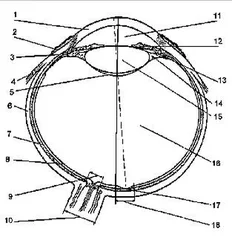State of New Jersey Motor Vehicle Commission - Driver Manual
Здесь есть возможность читать онлайн «State of New Jersey Motor Vehicle Commission - Driver Manual» весь текст электронной книги совершенно бесплатно (целиком полную версию без сокращений). В некоторых случаях можно слушать аудио, скачать через торрент в формате fb2 и присутствует краткое содержание. Жанр: sci_state, Юриспруденция, sci_transport, на английском языке. Описание произведения, (предисловие) а так же отзывы посетителей доступны на портале библиотеки ЛибКат.
- Название:Driver Manual
- Автор:
- Жанр:
- Год:неизвестен
- ISBN:нет данных
- Рейтинг книги:4 / 5. Голосов: 1
-
Избранное:Добавить в избранное
- Отзывы:
-
Ваша оценка:
- 80
- 1
- 2
- 3
- 4
- 5
Driver Manual: краткое содержание, описание и аннотация
Предлагаем к чтению аннотацию, описание, краткое содержание или предисловие (зависит от того, что написал сам автор книги «Driver Manual»). Если вы не нашли необходимую информацию о книге — напишите в комментариях, мы постараемся отыскать её.
Driver Manual — читать онлайн бесплатно полную книгу (весь текст) целиком
Ниже представлен текст книги, разбитый по страницам. Система сохранения места последней прочитанной страницы, позволяет с удобством читать онлайн бесплатно книгу «Driver Manual», без необходимости каждый раз заново искать на чём Вы остановились. Поставьте закладку, и сможете в любой момент перейти на страницу, на которой закончили чтение.
Интервал:
Закладка:
* Stay alert: Dedicate full attention to the roadway.
* Pay close attention: Signs and work zone flaggers save lives.
* Turn on headlights: Workers and other motorists must be able to see the vehicle.
* Don’t tailgate: Unexpected stops or slowing may occur.
* Don’t speed: Note the posted speed limits in and around the work zone.
* Minimize distractions: Avoid changing radio stations or talking on hands-free devices when traveling through a work zone.
* Expect the unexpected: Keep an eye out for workers and their equipment.
* Be patient: Remember that work-zone crew members are working to improve the ride for all motorists.
Reacting to driving problems
A motorist should always be prepared for any problems that he/she may encounter while driving. Certain situations require the motorist to react immediately in order to avoid an accident.
Ignition System
Today’s vehicles are equipped with ignition systems that, when used properly, will prevent the theft of an automobile and vehicle rollaway. An ignition system permits key removal only when the vehicle’s transmission is in the Park position. Motorists in an emergency situation on the highway may attempt to turn off the vehicle while it is still in motion, believing they will bring the vehicle to a stop. The basic rule the motorist must follow when operating a vehicle with a steering wheel ignition system is to never turn the ignition to the lock position while the vehicle is in motion. The steering will lock as the vehicle turns, and the motorist will lose control of the vehicle.
Skids
Sudden turns, lane changes or hard braking can throw a vehicle into a skid. This often happens on wet or icy roads. A motorist should handle a skid in both front-wheel and rear-wheel drive vehicles in the same way. If the rear end of the vehicle starts to slide, a motorist should take his/her foot off the gas pedal. A vehicle may spin if the steering wheel is quickly turned away from the direction of the skid.
To avoid a spin, the motorist should turn in the direction the rear of the vehicle is skidding, without over steering. When skidding, a motorist should look in the direction that he/she wants to go. A motorist will be able to feel when the vehicle is back under control and should then straighten the wheels. During a side skid, avoid using the brakes.
Emergency Stops
If an emergency highway stop is necessary, a motorist should always keep several basic points in mind. On a highway with paved shoulders, signal and turn onto the shoulder at or near traffic speed. Then begin to slow down. Where the shoulder is unpaved, signal a turn and slow down to a safe speed before turning off. Once the vehicle is pulled to the shoulder, turn on the parking lights or emergency warning lights.
Never block tail lights at night by standing or working behind the vehicle. Day or night, put a flare or other warning sign just behind the vehicle. Put another warning device at least 300 feet back (about 120 paces). Raise the hood. Tie a white handkerchief to the antenna or left door handle as a signal, if help is needed.
Running Off The Pavement
If a vehicle’s wheels drift onto the shoulder of the road, do not try to turn back onto the pavement right away. This might throw the vehicle off balance. Too often motorists panic and steer abruptly to return to the road, causing the vehicle to slingshot across the roadway or into traffic. Instead, a motorist should stay on the shoulder and ease up on the gas pedal. After the vehicle has slowed down to 25 mph or less, the motorist may turn back onto the road by turning the steering wheel one-quarter turn toward the roadway. This will allow tires to climb the pavement edge and get back onto the pavement.
If a vehicle runs off the pavement:
* Slow down.
* Regain control.
* Turn slowly onto the road.
Car Fires
Most car fires are caused by short circuits in the electrical system. In case of fire, do not waste time. Get passengers out and away from the vehicle at once, and call for help. A motorist should never attempt to put out a fire.
Plunging Into Water
Water causes more panic than any other emergency. Actual tests have resulted in a few tips. A vehicle with windows and doors closed will float for about three to ten minutes. Two major points in escape and self-rescue from a submerged vehicle are to wear a seat belt, which will increase the chances of surviving the initial impact of the water, and, while the vehicle is still floating on the surface, to escape through an open window. It is hard to open a door against water pressure, but a window can be rolled down easily. Power windows may short out, so try to open them at once. Glass in the side and rear windows can be broken but only with a heavy, hard object.
A front-engine vehicle will sink nose first. Some air may be pushed to the rear, near the roof. When the pressure inside and outside the vehicle is equal, it is easier to open a door. A motorist should try to escape through a door or window. Remember that three to five minutes gives plenty of time in an emergency. Wearing a seat belt is the best insurance against being knocked unconscious. Once out of the vehicle, a motorist may become disoriented underwater. Always remember to follow the air bubbles to reach the surface.
Stalling On Railroad Tracks
If the vehicle has a standard shift, the motorist should try to move it by running the starter in low or second gear. With an automatic shift, the motorist will have to push the vehicle off the tracks. If the vehicle cannot be moved off the tracks, and a train is coming, the motorist should move as far away from the tracks as possible and call for help.
Vehicle Failure
No matter how well a vehicle is maintained, there is still a chance a motorist will experience vehicle problems. A motorist should always be prepared for any type of situation and never panic.
Brake Failure
If a vehicle’s conventional disc and drum brakes suddenly fail, a motorist should shift to a lower gear and pump the brake pedal fast and hard several times. This may build up enough brake pressure to stop the vehicle. If that does not work, the parking brake should be used while holding the brake release, so the motorist can let up if the rear wheels lock and the vehicle begins to skid. With the vehicle in low gear, the motorist should begin looking for a safe place to stop off the roadway and call for help.
Tire Blowout
If a motorist experiences a flat tire or blowout, he/she should hold the steering wheel firmly and keep the vehicle straight while gradually slowing down. The motorist should remove his/her foot from the gas pedal but not use the brakes. The vehicle should coast to a stop on its own as the motorist pulls to a safe area off the roadway.
Power Steering Failure
When an engine dies, a vehicle’s power steering will fail. The motorist should keep a firm grip on the wheel because extra hand power will be needed to turn or keep control. The vehicle should be brought to a stop in a safe area off the roadway. The motorist may need to push very hard on power brakes that are not working.
Headlight Failure
If headlights suddenly go out, a motorist should safely bring the vehicle to a stop in a safe area off the roadway. The headlight or dimmer switches may help the lights go on again. If this does not work, the motorist should put the parking lights, emergency flashers or turn signals on and call for help.
Gas Pedal Problems
If a gas pedal sticks, the motorist should keep his/her eyes on the road while quickly shifting to neutral. Steer the vehicle to a safe area off the roadway, turn the engine off and call for help.
Читать дальшеИнтервал:
Закладка:
Похожие книги на «Driver Manual»
Представляем Вашему вниманию похожие книги на «Driver Manual» списком для выбора. Мы отобрали схожую по названию и смыслу литературу в надежде предоставить читателям больше вариантов отыскать новые, интересные, ещё непрочитанные произведения.
Обсуждение, отзывы о книге «Driver Manual» и просто собственные мнения читателей. Оставьте ваши комментарии, напишите, что Вы думаете о произведении, его смысле или главных героях. Укажите что конкретно понравилось, а что нет, и почему Вы так считаете.









![Nicholas Timmins - The Five Giants [New Edition] - A Biography of the Welfare State](/books/701739/nicholas-timmins-the-five-giants-new-edition-a-thumb.webp)

